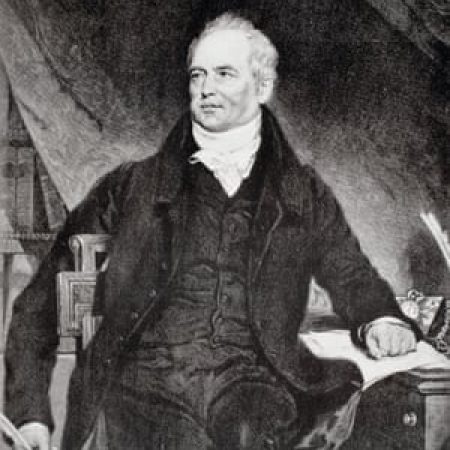Historians owe much to a poet, a workaholic and a “placeman
UNTIL the beginning of the nineteenth century the Rickman family of Hampshire lived in comfortable obscurity. Then one of its sons still in his twenties came up with the bright idea of counting the number of people in the country and thereby started the national census, one of the most useful sources for historians of all kinds.
It is because of John Rickman that we know that the population of Great Britain on March 10, 1801, was 10,901,236. At the request of the government of the day he had commanded an army of overseers of the poor, tithingmen, parish constables, schoolmasters and others to count the number of people in every corner of the kingdom (with the exception of Ireland, which was added 1821).
Hereafter, every 10 years, except in 1941, a national census has been carried out, though the results are embargoed for 100 years and those for 1931 have been destroyed by fire. Simple number counts were progressively embellished from 1841 with names, age, occupation and other details. Family historians and others are therefore eagerly awaiting the release of the 1921 census in January 2022. For the first time it will reveal details of place of work and marriages dissolved by divorce.
The story of the family has been researched by Diana Coldicott and is covered in Orlo Williams’ Life and Letters of John Rickman of 1911. Originally from Somerset, by the seventeenth century the Rickman family held the lordship of the manor of Hordle, near Lymington, with a windmill and a small estate of 50 or 60 acres on the coast. They also held the manor of Milford Baddesley, where William the grandfather of John the census-taker was born. William grew up to be a “studious lad of good talents” and at the appropriate age was sent off to Portsmouth.
He lodged there with a merchant, married his daughter Rebecca Missing, and did rather well. He became Mayor of Portsmouth several times, was appointed JP and in 1747 – by then living in the hamlet of Posbrook, near Titchfield – served as Sheriff of Hampshire. His fortune enabled him to bail out the family manor of Milford Baddesely, take on the lordship himself and build a new manor house, much of which still exists, within Milford House, once a hotel, now an apartment block.
Unfortunately, by the time William died in 1764, his money had run out – largely due to sureties he had put up for relatives – and all his property was sold. His sons therefore had to seek their own fortunes. John’s father, Thomas, became a clergyman elsewhere, but towards the end of his life returned to live at Christchurch.
It is near here that another essential part of the census story took place, in the village of Burton. In 1797 John, “resting” with his father after graduating from Oxford, met a future poet laureate, Robert Southey, who was renting a cottage in Burton. The two young men were both mapping out their future lives and became firm friends. More than 1,200 letters between them are known.
Rickman passed his days reading everything he could find. It was a time when the size of the population was on the agenda. Malthus had predicted that the fecundity of the poor would lead to starvation and could only be solved by sending boatloads of ordinary people across the Atlantic. Then there were wars – were there enough men to fight the French?
The obvious answer was to count the number of people and John decided to mention the idea to the notorious “placeman” and Christchurch MP George (later Sir George) Rose, who had a villa on Mudeford beach. He in turn mentioned it to Charles Abbot (later Lord Colchester) who in short order in December 1800 passed an Act through parliament.
By this time, courtesy of introductions from Southey, John was living in London and working as an editor. The worthy, but unexciting title in his hands was Commercial, Agricultural, and Manufacturers’ Magazine, in which he published his ideas. In a letter to Southey he described it as “a pleasurable occupation…producing about £70 pa”.
He added: “I have another occupation offered me.… At my suggestion they have passed an Act of Parliament for ascertaining the population of Great Britain, and as a compliment (of course) have proposed to me to superintend the execution of it.”
Superintend it he did, and went onto to run later censuses, with increasing sophistication, until his death in 1840. He was something of a workaholic and between censuses followed a distinguished career as a parliamentary administrator, responsible for the building of the Caledonian Canal and much else. He was also elected to the Royal Society.
In 1836, Rickman’s project passed to the new General Register Office, based in Somerset House, then in 1970 to the Office of Population Censuses and Surveys and finally in 1996 to the Office for National Statistics. Latterly, it has been based in Hampshire, at Titchfield.
Originally a “paper and pen” exercise, the census of 1911 moved to punched cards and mechanical sorting and from 1961 has been processed electronically. The first run used the computerof the Royal Army Pay Corps at Worthy Down, near Winchester. For more information on Hampshire, visit Hampshire Genealogical Society and read Emma Jolly’s A Guide to Tracing Your Family History Using the Census.

